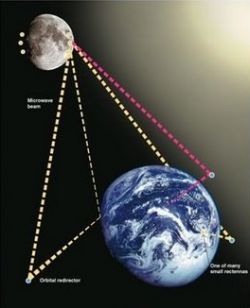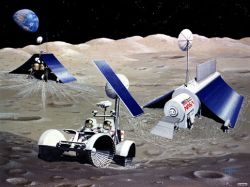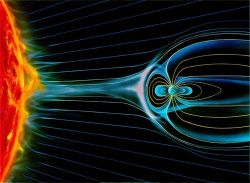
Sam Rockwell, in the Hollywood movie “Moon,” explains how the moon may possibly benefit Earth with much-needed energy in the future. It urges us to come out of the age of questioning that relates to the decline in energy sources and the lack of alternative ones. Accordingly, one solution comes forth that sounds like a paranoid flight of human imagination. It asks to collect solar power on the moon’s surface and then redirect it to Earth via microwaves. Is it a zero-plausibility scenario or sci-fi? However, considering the acute energy crisis and the level of emissions, the researchers are actually looking forward to what the movie depicts. Therefore, it is a bit difficult to discard it (call it a concept) straightaway.
Conceptualizing the feasible:
Apollo astronauts found helium-3 on the moon in 1969. It was hailed as the perfect future fuel source. Being extremely effective, nonpolluting and sans any radioactive byproducts, He3 was plainly labeled as a 21st-century fuel. There are some possible ways to exploit this abundant source of energy:
1) Redirecting microwaves to Earth

Helium 3 is deposited on the moon’s surface when solar wind, the express stream of charged particles emitted by the sun, strikes the moon. It keeps on piling up there over billions of years. Criswell, a physicist and Space Age expert, says that we can set up a Lunar Solar Power System (LSP) on lunar surface. The system encompasses storage of solar energy and its subsequent conversion into microwaves. These microwaves could be sent to Earth via powerful beams. Afterward, we can change microwaves into electricity to be amassed at the local power grids. It’s definitely not that easy. The system demands 20 to 40 power bases on the eastern and western edge of the moon. It requires huge machines to extract metal and produce thin glass solar cells. If we could harness one percent of 13,000 terawatts of solar power, it might put the entire planet’s energy needs to an end.
2) Transporting He3 from the Lunar surface

Gerald Kulcinski, a nuclear engineering professor and director of the Fusion Technology Institute at UW, says:
If we could land the space shuttle on the moon, fill the cargo with canisters of helium-3 mined from the surface and bring the shuttle back to Earth, that cargo would supply the entire electrical power needs of the United States for an entire year.
This energy of helium-3 could be harnessed through fusion, which combines atoms to create energy. As helium-3 is easily available in the top layers of the moon soil and rocks, mining won’t be an issue. We can even utilize abundant silicon to make solar cells to harvest solar energy there itself. What makes it challenging is the enormity of transportation. Though 25 tonnes of He3 would power the United States for 1 year, do we have the space invaders that could carry such a load? In addition, the transportation costs a gigantic $3 billion per tonne.
3) Cutting through the Earth’s magnetic field:

Scientists go on to suggest that electromagnetic induction could be a way out. Potentially, Earth’s magnetic field while making moon to revolve around it can generate electricity. One of the shuttle missions has proved it. Passing through the magnetic field between Earth and the moon, the space shuttle was able to generate electricity. Again, feasibility deserves a mention here.
4) Exploiting the temperature variations:
We can take advantage of the extreme temperature variations in the lunar environment. Energy generation is possible via a thermocouple that consists of zinc and copper. Placing the copper side in the sun and the other in the shade, the temperature difference effectively produces an electric current. As we know that the moon’s surface undergoes tremendous temperature fluctuations, this concept cannot be ruled out.
Conclusion:
Lawrence Taylor, a director of the US Planetary Geosciences Institute, says:
It is currently being done mostly as a laboratory experiment. Right now at the rate which it (research) is proceeding it will take another 30 years.
Unfortunately, the researchers are proceeding at snail’s pace and nothing substantial has been done so far. There is no progress except some blueprints and lengthy speeches by the world leaders. They are doing their best to postpone it with no sign of stopping and want it to continue as a fairy tale forever.

